MY FRIEND DAHMER: Home is Where The Heart Is – A Murderino’s Take
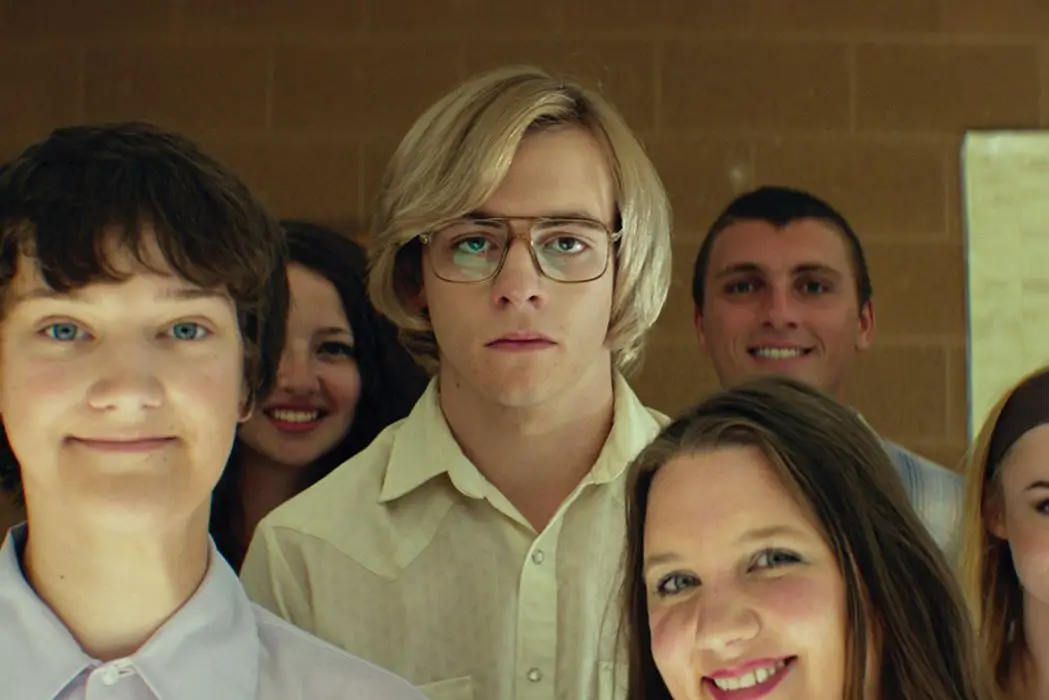
Laura Birnbaum is a proud film critic and writer from…
As I flip through my senior year high school yearbook, I see the familiar faces of my former classmates, all of us caught in a time so desperately adolescent and formative that some of us chose to never look back. And yet, here I am; dusting off the tucked away evidence of a complex time, flipping through its pages in a kind of reflexive response to a film I watched a week ago. But why?
Continuing my nostalgic exploration, I find the student council president pointing confidently at a paper spreadsheet project of questionable authenticity on the bottom of page 43. On page 127, a Sophomore year diver is suspended mid-air, gracefully caught in a well-practiced contortion as a blurry background of onlookers remain forever paused, breathless, unknowing. I soon find myself scanning through the pages dedicated to clubs of all kinds, from Anime to W.H.O. (We Help Others), in which students are pictured standing upright, proudly exhibiting their involvement therein.
But what if it turned out that one of them wound up doing something horrible? What if the kid in the back row with that vaguely familiar face became a monster, or perhaps more haunting, were they a monster all along? For “Derf” Backderf, these questions and their answers would forever distort the images in his old Revere High School yearbook upon the discovery that his real-life high school acquaintance had become one of the most notorious serial killers of all time. From director, Marc Meyers, adapted from Backderf’s graphic novel by the same name, My Friend Dahmer paints an intimate portrait of a future killer – retrospectively searching to see if the clues for an untapped evil were there from the start.
First Impressions
With the precursory knowledge of his later crimes (his first murder having been committed only three weeks proceeding his high school graduation in 1978), the film carries the unsettling weight of knowing that the worst is yet to come. In that way, the film itself serves as a Minority Report-like precognitive vision – the name “Jeffrey Dahmer” inscribed on a wooden ball, rolling its way down the machine.
In My Friend Dahmer, his future crimes are eluded to, though not overtly. The film seeks not to exploit or disgust, merely to show the deteriorative evolution of a quietly troubled young man who had yet to become the monster most would know him to be.
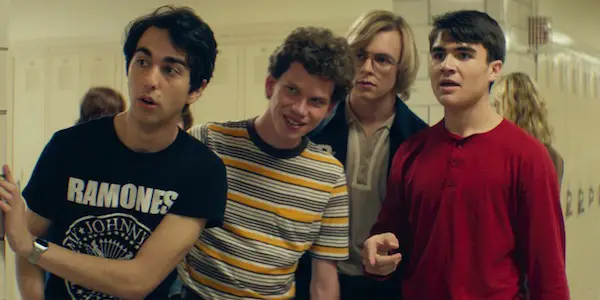
We follow a 17-year-old Jeffrey (Ross Lynch) during his senior year in high school as he awkwardly drifts through the halls in an state of visual discomfort – imprisoned by a visceral loneliness that would eventually grow into the act of cannibalism in a grisly attempt to suppress it. So as to subdue the thoughts that haunt him, he binge drinks his way through the school day, donning a styrofoam cup filled with scotch (a means through which he would later use to drug his victims).
He begins faking seizures in the halls of his school in an awkward, yet theatrical cry for attention. Backderf (Alex Wolff) and his group of friends take particular notice to Dahmer’s histrionic fits and crude impressions. Allured by his “class clown” persona, the group soon appoints him as an unofficial school mascot, sneaking him into the club pictures for the yearbook and encouraging his running gags. But to the audience, the transparency of his facade is evident as Meyers shows us far more of him than meets the eye.
Home is Where the Heart is
Filmed in the actual three-bedroom, mid-century modern home in which the Dahmer family lived in Bath, Ohio (a sure draw for true crime fans and murderinos such as myself), My Friend Dahmer provides a privileged intimacy regarding Jeffrey’s home life that few know. Anne Heche, who plays Joyce Dahmer (Jeffrey’s mother), stated that “it was like all the ghosts of the house were infused in what we were doing.” And what they were doing was something quite remarkable; capturing the distinct nexus between the misery of what was and the horrors of what would be.
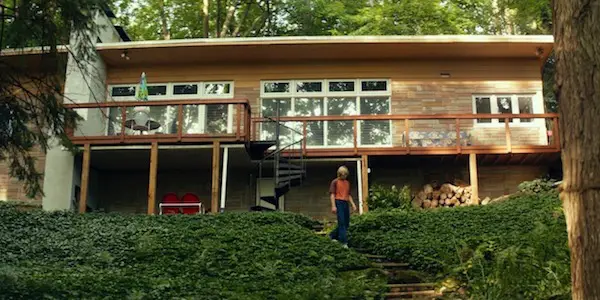
At home, Jeffrey is caught in a pattern of neglect and alienation which only give rise to the dark thoughts that haunt him. Jeffrey’s parents are in the midst of a quarrelsome divorce, thus perpetuating and inciting a deep sense of loneliness from which he would never learn to cope. Joyce is portrayed as a classic Hitchc*ckian mother – overbearing, unpredictable, and in this case, psychologically unwell (Jeffrey’s seizure performances at school were in fact an imitation of his mother, whose epileptic fits eventually led her to self-medicate quite heavily).
His father, Lionel (Dallas Roberts) is a far more dispirited and downtrodden character, spending most of his time focused on his work as a chemist as a means to dissociate from the dysfunction at home. Along with Jeffrey’s already-rampant alcoholism, he finds a similar, however far more sinister way of coping than his parents.
He seeks solace in the fabled shed that his father built for him on the property (the dilapidated roof of which was in fact uncovered while grown-up Backderf and dir. Meyers walked through the surrounding woodland area before filming began). In the film, we see Jeffrey use the enclosed space as a makeshift chemistry lab where he indulges his fascination with bones. He places roadkill in jars filled with chemical concoctions to acidify their carcasses, the resulting color of its contents, a greenish-yellow (both the chemical jars and the ‘trophy’ space would play a large role in his future crimes).
In Lionel Dahmer’s book entitled A Father’s Story, he recounts his experience raising Jeffrey stating that he “can no longer view [his obsession with bones] simply as a childish episode, a passing fascination. This same sense of something dark and shadowy, of a malicious force growing in my son, now colors almost every memory.”
Sensory Adaptation
Color plays a key role in My Friend Dahmer, and as is the case with many great films, it gives the audience insight into the mind of its subject. A prime example of color serving as subtext within the film is through the use of a greenish-yellow light and/or filter, effectively permeating scenes in which Dahmer is most vulnerable, lonely, or (probably but also maybe definitely) thinkin’ ‘bout dead things. This color contrasts with the otherwise vibrant, late ‘70s color palette in the surrounding scenes, immediately giving the impression that something is off.
It’s as if we are all specimens submerged in one of his chemical-filled jars, effectively bound to his endless pursuit of the bones that reside within. The putrescent lighting in My Friend Dahmer elicited the same anxiety and dread that I felt while watching Jake Gyllenhaal and Bob Fleischer during the famed basement scene in Zodiac (aka tension fest 2007), and its no wonder David Fincher bathed that scene in a similar hue. It is the color of decay, the color of death, and deep in the recesses of our Darwinian minds, it’s a color that alerts us to steer f*cking clear.
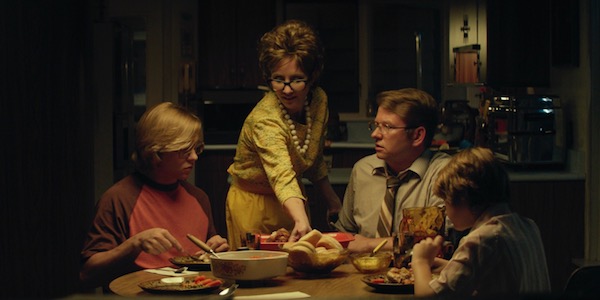
On theme with weird sensory adaptations, at the time we meet Jeffrey Dahmer in his story, his sexuality has long-since begun to fuse with death. The film is tactful (yes, tactful) with its portrayal of the subject, which says a lot about the restraint and care with which the film was made. An example of such tact and skill can be seen at the opening of the film where a school bus drives past a dead animal on the side of the road.
Looking out the window of the school bus is none other than ‘our friend’ Dahmer, staring blankly at the roadkill through his aviator glasses, eyes as dead as the dead thing, blonde hair blowing freely in the wind. Shortly thereafter, a local jogger (Vincent Kartheiser) passes by, capturing Jeffrey’s attention all the more. This juxtaposition of a shot/reaction/shot is a classic and effective form of visual storytelling known as The Kuleshov Effect (best outlined as a dialectical montage in an interview with Alfred Hitchc*ck)
The jogger, like the shed, is a key part of the Jeffrey Dahmer lore. He was real, yes, but he is also a paradigm – an allegorical canvas within the story on which we could so easily paint ourselves – going about our daily routines, unaware who might be lurking in the tree’s shadows. As is true to life, the jogger plays a key role in the film as a recurring, but passing figure in Jeffrey’s world (unlike his parents who spend most of their energy elsewhere). His covetous fascination of the jogger would be the genesis of his homicidal inclinations, and his deep-seeded issues with abandonment would only turn him farther away from the council of others and further into the darkness of his own mind.
Personal Reflections
Before he became engrained in America’s consciousness as the epitome of evil itself, Jeffrey Dahmer was just a kid. As evidenced in the film, the clues were absolutely there from the start, making it easy to place blame on the parents and teachers around him who weren’t paying enough attention to care. Perhaps that blame is deserved, perhaps not, but I’ll admit that I found myself suspended in sympathy while watching this film and researching everything I could find concerning Jeffrey Dahmer’s upbringing.
However, the sympathy I feel for him is locked in time – wholly barricaded between his adolescent troubles and the moment he picked up 18-year-old Steven Hicks, lured him back to his newly vacant house, and killed him. My mercy ends there.
While you and I might not share the same emotional response to watching My Friend Dahmer, the film will undoubtedly keep you in a state between knowing and unknowing, ultimately placing you right at the center of a villainous origin story whose ending you likely already know. The film’s arresting title implies an affiliation of the most unsavory kind, but please don’t let that deter you. My Friend Dahmer isn’t a film about friendship. It seeks not to condone the actions of the man Jeffrey Dahmer would become, but rather to illustrate the gnarled roots from which he came.
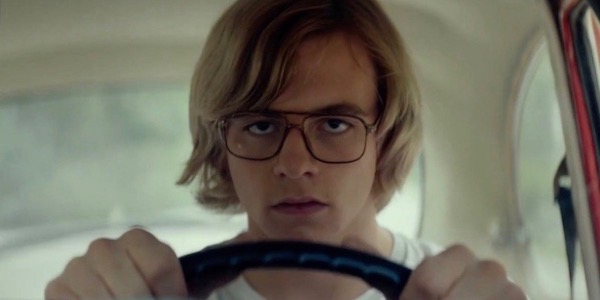
I set out to review this film, but in the process of doing so, I seem to have used it as a vehicle by which to gain a better understanding of a man who has haunted me my entire life. Even as a sheltered ’90s kid living in Chicago, it was hard to avoid overhearing news reports about the “Milwaukee Cannibal,” and while I didn’t know what that meant at the time (thank god), I was at an age where the validity of monsters (or Santa Claus for that matter) were in question. “Monster,” I understood, and “monster,” he was, but through the process of watching this film and writing about it thereafter, I am reminded of the scariest part of all – his humanness.
Making sense of the madness is at the heart of my interest in true crime, and while that sometimes makes me really bad at parties (stop talking about the damn jogger already, dang it), it also makes really good at quoting Karen and Georgia from My Favorite Murder. And with that, the only advice I have left is to stay sexy, don’t get murdered, and be sure to include a sabbath day in your jogging schedule.
Do you feel like this film did a good job at portraying the high school life and times of Jeffrey Dahmer? Let me know down in the comment section below!
My Friend Dahmer is currently available to rent or buy on multiple formats. You can also stream it using Kanopy, a free streaming service affiliated with local libraries.
Does content like this matter to you?
Become a Member and support film journalism. Unlock access to all of Film Inquiry`s great articles. Join a community of like-minded readers who are passionate about cinema - get access to our private members Network, give back to independent filmmakers, and more.
Laura Birnbaum is a proud film critic and writer from Chicago. When she's not watching independent horror films, she's likely smoking a cigar on a rooftop somewhere, thinking about which indie horror film to watch next.












